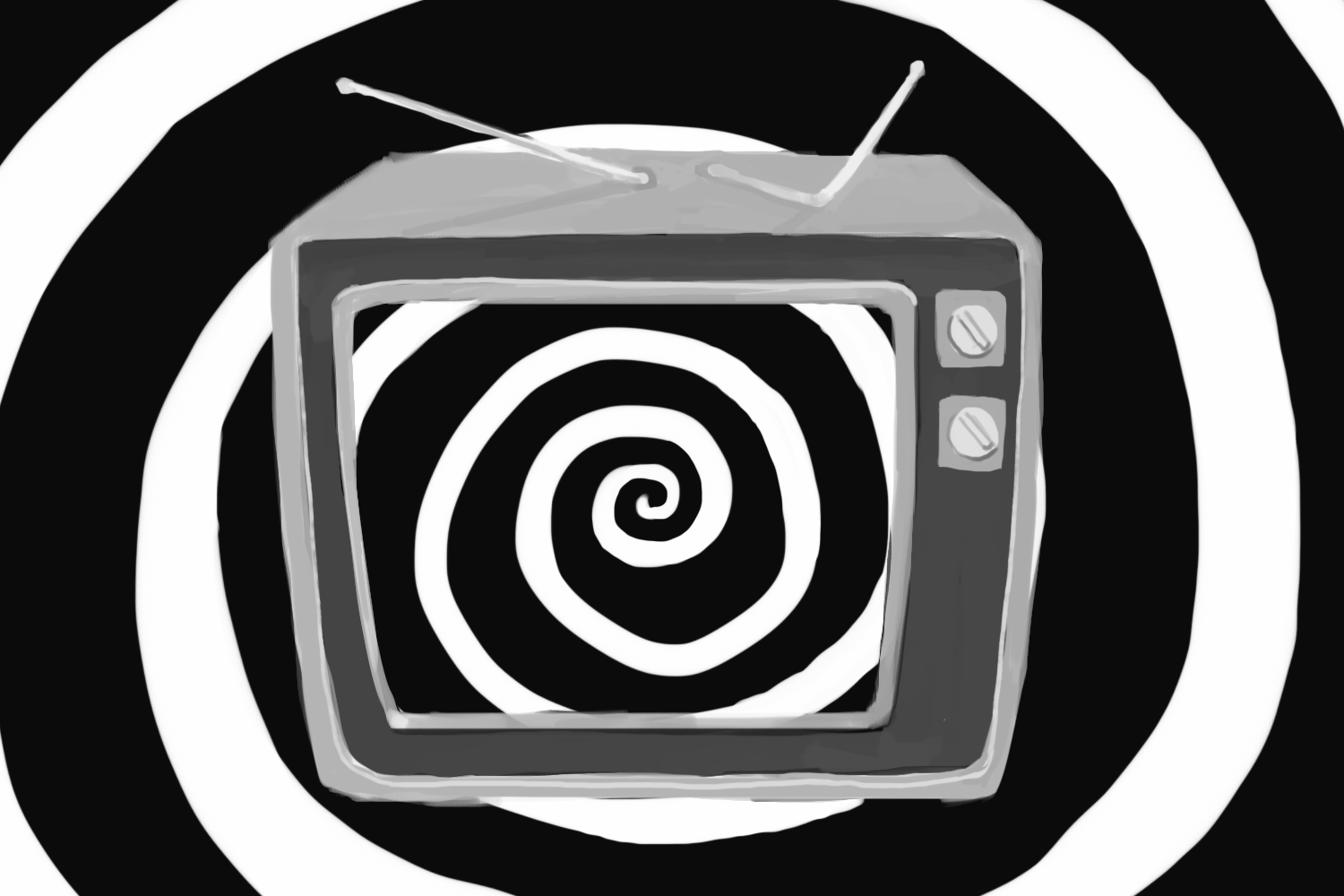“There is a fifth dimension beyond that which is known to man. It is a dimension as vast as space and as timeless as infinity. It is the middle ground between light and shadow, between science and superstition and it lies between the pit of man’s fears and the summit of his knowledge. This is the dimension of imagination. It is an area which we call…the Twilight Zone.”
Wow, what an intro! “The Twilight Zone,” a show that has been raising questions of humanity and morality since the late 1950’s, is now available on Netflix in all its black-and-white glory. This science-fiction anthology series, created by Rod Serling, presents over 100 episodes of hypothetical situations in which the viewer is engulfed from start to finish. Each episode poses its own plot, so they don’t need to be watched in order.
https://www.youtube.com/watch?v=lujD-XyKWGU
This television classic, when aired, was one way ahead of its time. In an era of uncertainty and cynicism, “The Twilight Zone” pushed the boundaries of societal norms by involving heavy topics like life/death, isolation, crime and punishment and much, much more. The show bears similarities to today’s “Black Mirror,” but grainier and a little less explicit. As a young adult watching the show, I found myself wondering of my own reaction to each situation posed in the episode.
Any show that has the ability to keep me glued to my seat, staring at the screen with wide eyes even as the credits roll and making me question any decision I have ever made and will ever make, is a job well done. “The Twilight Zone” sheds light on the world of right and wrong, humane and inhumane. As a budding mind journeying through some of life’s toughest trials, this show is a must.
Each episode contains aspects of futurism, despair, sacrifice and most of all, a question of ethics that leaves the viewer wondering whether the main character(s) are ever justified in their choices. The show offers a glimpse into a realm of the unknown and the situations presented on screen are either resolved, or leave a bigger gap in which the watcher fills in the blanks and determines their own kind of ending. That’s the beauty of “The Twilight Zone”: what one person may take away from an episode can differ completely from another.
Take Episode 6 of Season 2, for example. In “Eye of the Beholder,” Ms. Tyler has just undergone her last facial surgery and from the context, viewers can guess that there have been many preceding it. Up until the last few minutes, Ms. Tyler’s face is completely covered by bandages and you can only try to predict what she looks like by the sound of her voice.
Many doctors and nurses are involved in the process of transforming the patient’s appearance and there is a lot of pressure placed on the final attempt at making her look “normal.” To add to the suspense, every other characters’ face is hidden in shadow and you can’t quite make out anyone’s features until the end.
When Ms. Tyler’s bandages are removed for the final time and you hear the gasps and dismay of the surgeons, it is then you discover that the patient is actually incredibly beautiful. Everyone else, however, displays a horribly deformed appearance with somewhat of a pig nose. In the end, Ms. Tyler is sent off with a Mr. Smith (an equally attractive man) to live in a community with the others like them.
It seems that the “beautiful people” (who in this reality are the ugly people?) often question why they are born this way instead of fitting in with the world around them.
Besides the initial WTF upon viewing, this episode, along with all the others, triggers lots of questions and could be the source of a spicy debate. Does beauty dictate how successful or important humans will be throughout their lifetime? Are certain characteristics/personalities shunned if unable to fit into a certain mold society has created? This is only a little taste of what “The Twilight Zone” has to offer. The series explores ideas of space travel, events of apocalyptic nature, superhuman abilities such as mind-reading and even making deals with the devil to achieve immortality.
“The Twilight Zone” was pertinent when it was debuted, and it could be argued that it’s even more relevant to the world that exists now. With technology constantly moving forward and people adapting to situations that were unheard of a decade ago, Rod Serling was definitely onto something when he released this masterpiece. “The Twilight Zone” is not only a show, but a metaphor for all of life’s potential “what-ifs.”
Millennials are known for being the generation of curious souls who are always in search of something more, and that is exactly what this series delivers. Even if episodes are only 20 minutes long, each episode allows the viewer to escape reality and dive into a dimension where your greatest fears and most plaguing thoughts are uncovered. You’re able to put yourself in each character’s’ shoes and journey with them as they too experience something unimaginable, yet almost within reach. Sounds scary? Trust me, it’s more awesome than it is scary
Each episode contains thrills and twists that put a spin on what you would typically perceive as reality. Simply put, “The Twilight Zone” makes you think. Netflix is full of shows focused around love, heartbreak, funny situations and adolescence. But this one, well, this one is different.
“The Twilight Zone” is all of your favorite cinematic aspects wrapped up into a perfect little bow. For all the dreamers and thinkers always searching for something bigger, this show is your perfect pit-stop. Sit back and let the world disappear as you venture into a dimension only known as … the twilight zone.


















The show tackles timeless themes such as social justice, identity, and the consequences of technology.
This is a fantastic article highlighting the timeless relevance of “The Twilight Zone.” The comparison to “Black Mirror” is spot on, and I completely agree that the show’s ability to provoke thought and discussion is what makes it so compelling. I’m definitely going to check out the episode you mentioned! Thanks for the recommendation, free stories for kids.
Fantastic read! You perfectly articulate why The Twilight Zone’s timeless ethical dilemmas are still so relevant. It truly makes viewers self-reflect. A must-watch! Thanks for sharing this gem on ai drawing.
Fantastic read! You highlight ‘The Twilight Zone’s’ timeless ethical questions and its relevance to ‘Black Mirror’ perfectly. It truly makes you reflect on morality. Must-watch indeed. Thanks for this insight on Labubu Game!